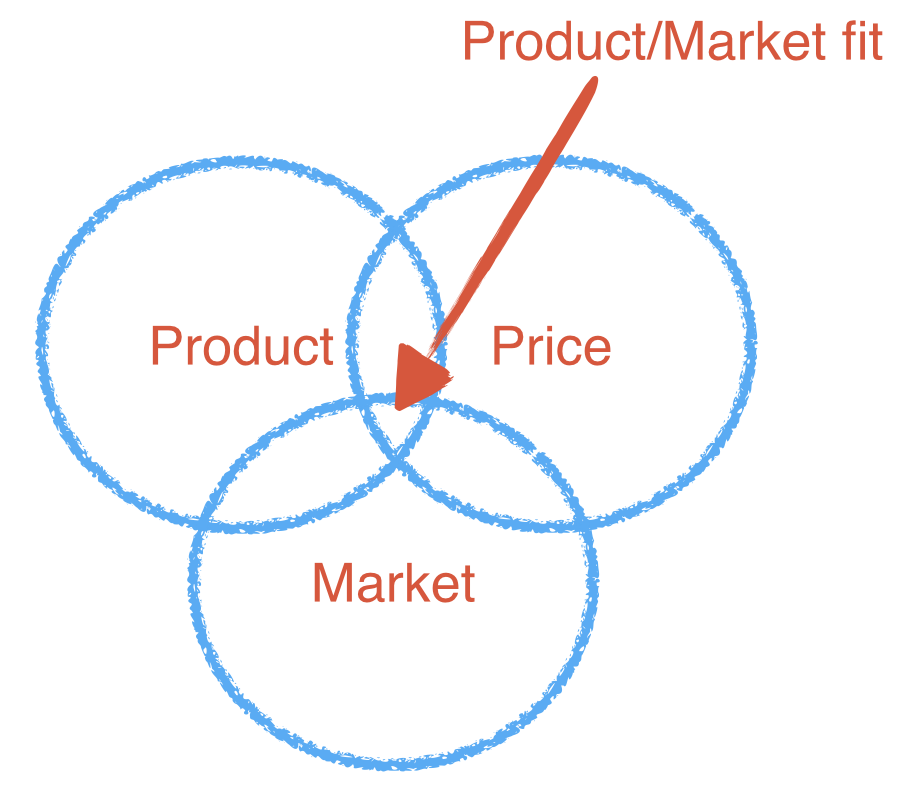 Every startup has to experiment with product, price and market to find the right combination that allows them to scale and win. But if you find yourself experimenting with all three at the same time, you need to take a step back and evaluate where you’re really at.
Every startup has to experiment with product, price and market to find the right combination that allows them to scale and win. But if you find yourself experimenting with all three at the same time, you need to take a step back and evaluate where you’re really at.
Last week I wrote about product/market fit and Lean Analytics–and the idea that a startup goes through multiple stages (Stickiness, Virality, Revenue, Scale) each of which has its own product/market fit gate that allows you to move from one stage to the next. There’s one Lean Analytics stage that I didn’t write about: Empathy.
Empathy is the earliest stage of a startup. Your goal at the Empathy stage is to validate that the problem you’re looking to solve is painful enough (to a set of users) that it’s worth fixing. This is the beginning of Lean Startup; you’re told to “get out of the building” and find people to conduct problem and solution interviews with. Most founders that give this a try will unfortunately find enough false positives and rush to the next step (Stickiness) to build product. Or they’ll rely on other things like “market size” (which is almost always massive!) to convince themselves that they should start a company in a particular space. Ultimately what ends up happening when you don’t do the work up-front to really vet your ideas is that you find yourself experimenting with product, price and market at the same time.
Product Experimentation
When things aren’t “clicking the way they should” founders often jump into product experimentation first. What’s the simplest thing to do when you’re not sure what to do? That’s right–build more product! You’ll collect feedback, build more and more features, and hope that one day you’ve built enough stuff for people to buy from you. Unfortunately, it doesn’t work that way. If you’re constantly hearing, “I’ll buy your product when it has X feature,” there’s a good chance the customer will never buy. The pain isn’t acute enough. They’re stalling or making things up.
Adding features isn’t the answer. Finding the pain is. Product experimentation works when you use it to genuinely figure out if you’re solving someone’s problem, enough so that they use your product regularly (and you’re able to move to the next stage: Stickiness). Product experimentation can lead to a successful pivot if it’s based in real learning from your users. Product experimentation–if market and price are constant (and working well)–can also help you figure out how to expand your product or improve core metrics around usage and engagement.
Price Experimentation
This usually comes second. If people aren’t signing up quickly enough or converting from free to paid, founders gravitate towards changing the price. Unfortunately this usually means lowering it (and generally I find early stage startups under-charge and claim it’s a competitive advantage). Sometimes, founders decide to change business model entirely, but unless you really understand your customer, how they budget, how they buy, etc. there’s little hope of something like this working.
Price experimentation is worth doing. It’s common practice to test different plans, pricing pages, up-sells and more. But it only works if the product and market are constant.
Market Experimentation
Back in 2010 I wrote a post, Product/Market Fit or Market/Product Fit?, with the idea that it’s possible to take an existing product and point it at a new market. Building product is expensive. In many ways it’s the riskiest thing you can do because it has a longer timeline (than price and market testing) and more unknowns. If you have an existing product but it’s not working in a particular market why not point it somewhere else? Go upstream. Go downstream. Shift to a new industry. All of these options are possible and relatively easy (create some new landing pages, buy some traffic and see what happens).
I don’t want to undermine the effort required to go after a new market, and this probably feels like the biggest shift of all (versus the other experiments you could run), but don’t dismiss this option. Many founders I speak with are trying to boil the ocean of customers–going after broad swaths of customers that you can’t even define as an actual market. Focus on the narrowest market possible and see if you can get traction–then there’s a much bigger opportunity to experiment with product and price.
Product, Price and Market
This is the Holy Grail–when product, price and market all align and you’ve built something that works.

Of course, you’ll never stop experimenting, even as you’re going through the Lean Analytics stages and achieving certain levels of product/market fit. But you can’t have too many moving parts, otherwise the experiments don’t work.
And this brings me back to Empathy, the earliest stage of a startup. If you take stock of where you’re at, and you realize that you don’t know what product suits what market at what price, you’re back at the Empathy stage. You might have a product in market. You might be converting a few users into customers and generating a bit of revenue. In the consumer world you might be trickling in users and have some amount of usage. But none of this is enough to scale, and because you don’t have any constants between product, price and market you don’t really know what to test first. Go back to the beginning. Talk to your users, prospects and customers. Narrow your market focus and experiment with price. Simplify the product (or at least present it as simpler, don’t waste cycles with more engineering) and test a new market. Find the pain that really matters to a specific group of people and point yourself in that direction. Keep at least one of product, price and market constant (ideally two) and focus on the simplest, quickest experiments you can run around the other variable(s). You won’t get things right the first time, but you’ll have more opportunity to iterate faster, which increases the likelihood of success.
Photo from Indra Galbo.
 Founding Partner at
Founding Partner at 